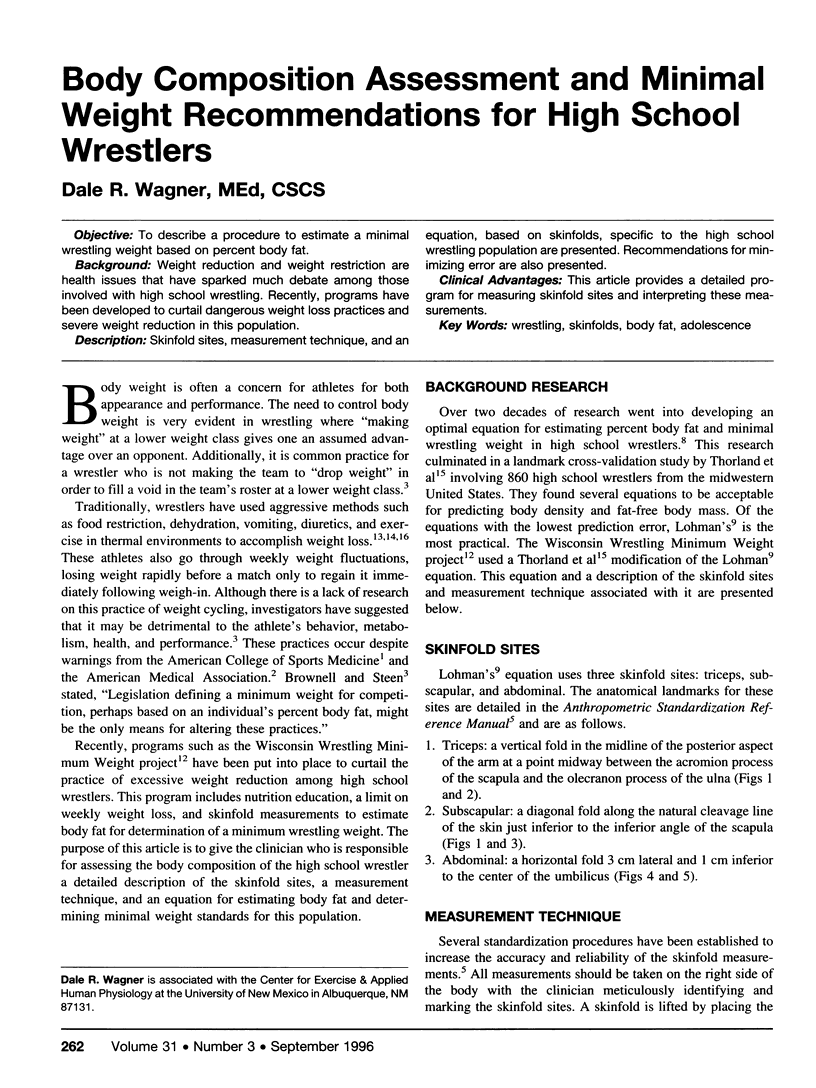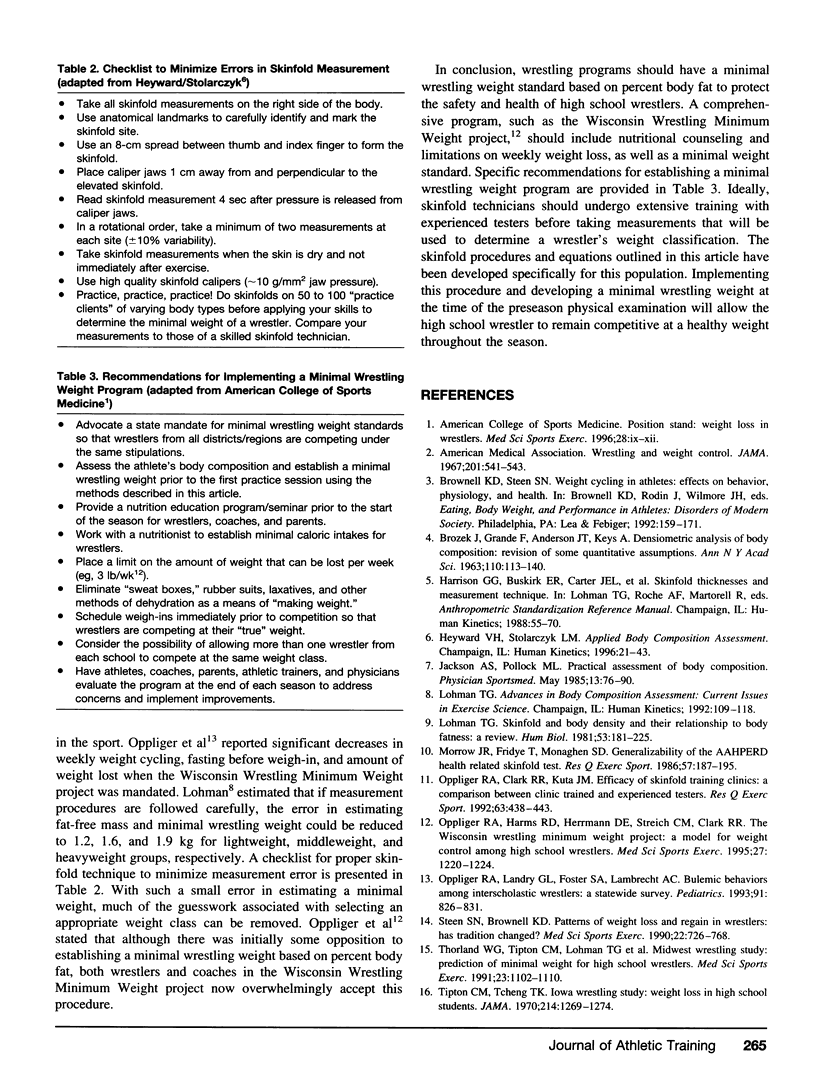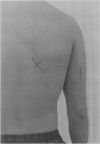Abstract
Objective:
To describe a procedure to estimate a minimal wrestling weight based on percent body fat.
Background:
Weight reduction and weight restriction are health issues that have sparked much debate among those involved with high school wrestling. Recently, programs have been developed to curtail dangerous weight loss practices and severe weight reduction in this population.
Description:
Skinfold sites, measurement technique, and an equation, based on skinfolds, specific to the high school wrestling population are presented. Recommendations for minimizing error are also presented.
Clinical Advantages:
This article provides a detailed program for measuring skinfold sites and interpreting these measurements.
Keywords: wrestling, skinfolds, body fat, adolescence
Full text
PDF



Images in this article
Selected References
These references are in PubMed. This may not be the complete list of references from this article.
- BROZEK J., GRANDE F., ANDERSON J. T., KEYS A. DENSITOMETRIC ANALYSIS OF BODY COMPOSITION: REVISION OF SOME QUANTITATIVE ASSUMPTIONS. Ann N Y Acad Sci. 1963 Sep 26;110:113–140. doi: 10.1111/j.1749-6632.1963.tb17079.x. [DOI] [PubMed] [Google Scholar]
- Lohman T. G. Skinfolds and body density and their relation to body fatness: a review. Hum Biol. 1981 May;53(2):181–225. [PubMed] [Google Scholar]
- Oppliger R. A., Clark R. R., Kuta J. M. Efficacy of skinfold training clinics: a comparison between clinic trained and experienced testers. Res Q Exerc Sport. 1992 Dec;63(4):438–443. doi: 10.1080/02701367.1992.10608767. [DOI] [PubMed] [Google Scholar]
- Oppliger R. A., Harms R. D., Herrmann D. E., Streich C. M., Clark R. R. The Wisconsin wrestling minimum weight project: a model for weight control among high school wrestlers. Med Sci Sports Exerc. 1995 Aug;27(8):1220–1224. [PubMed] [Google Scholar]
- Oppliger R. A., Landry G. L., Foster S. W., Lambrecht A. C. Bulimic behaviors among interscholastic wrestlers: a statewide survey. Pediatrics. 1993 Apr;91(4):826–831. [PubMed] [Google Scholar]
- Steen S. N., Brownell K. D. Patterns of weight loss and regain in wrestlers: has the tradition changed? Med Sci Sports Exerc. 1990 Dec;22(6):762–768. doi: 10.1249/00005768-199012000-00005. [DOI] [PubMed] [Google Scholar]
- Thorland W. G., Tipton C. M., Lohman T. G., Bowers R. W., Housh T. J., Johnson G. O., Kelly J. M., Oppliger R. A., Tcheng T. K. Midwest wrestling study: prediction of minimal weight for high school wrestlers. Med Sci Sports Exerc. 1991 Sep;23(9):1102–1110. [PubMed] [Google Scholar]
- Tipton C. M., Tcheng T. K. Iowa wrestling study. Weight loss in high school students. JAMA. 1970 Nov 16;214(7):1269–1274. doi: 10.1001/jama.214.7.1269. [DOI] [PubMed] [Google Scholar]







